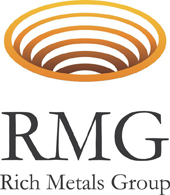
Government supports RMG Goldmining work
By Tatia Megeneishvili
Monday, January 5
Prime Minister of Georgia Irakli Gharibashvili said that Georgian Government supports the renewal of the license to mine at Sakhdrisi-Kachagiani gold mine by RMG Gold Company.
Gharibashvili spoke about the importance of continuing the mining work in Sakdrisi-Kachaghiani.
“There are many archaeological artifacts in Bolnisi, which means neither state nor a private company is allowed to do anything in that district. However, I would like to explain that on the one hand, we have an abandoned archaeological object where several artifacts have been discovered and on the other hand there are 3, 000 families living in the area. On behalf of the government I would like to affirm that the company will be allowed to continue its activities to prevent these 3, 000 families from becoming unemployed. This is a joint position, as we have already had a conversation with our economic team,” stated the Prime Minister.
Gharibashvili also said that a modern archaeological museum would be built in Bolnisi to house the artifacts discovered in Sakdrisi-Kachaghiani.
Sakdrisi Defenders are against the government’s decision. They addressed the Ministry of Culture with a statement demanding the suspension of the work process in Sakdrisi. However, the structure answered them by saying that they are not authorized individuals.
“This is a bad decision. The members of our government do not respect our past and people’s opinion,” stated Irakli Lomidze, one of the Sakdrisi defenders.
Another Sakdrisi Defender Nino Mikiashvili that they will fight till the end.
“We will do our best to punish everyone who is guilty in ruining this archeological area,” she stated.
Meanwhile, parliament supported the creation of a committee that will study the Sakdrisi issue. However, a meeting regarding the issue has not been held yet.
Some experts believe that the Sakdrisi gold mine is one of the oldest gold mines in the world, dating back almost 5,000 years. Sakdrisi was discovered in the early 2000s and excavations began in 2006. It was initially given the status of cultural heritage site but this was revoked by the Ministry of Culture and Monument Protection in 2013.

